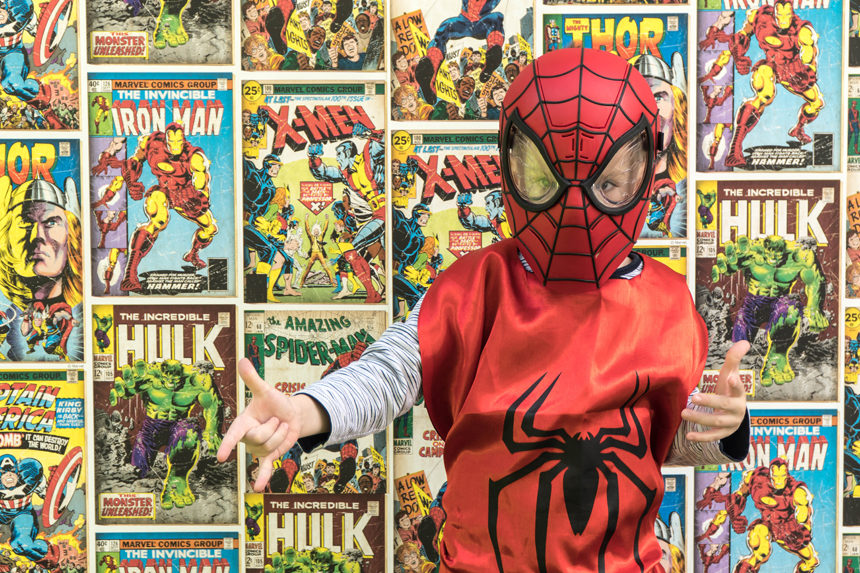Before they conquered the global box office, the characters of the Marvel Cinematic Universe made their debut in the comic book pages. Launched as Timely Comics in 1939 before becoming Atlas in the 1950s, Marvel Comics adopted its familiar brand name in 1961. That year, they made a mark with the debut of the Fantastic Four. But the year that followed displayed a stunning amount of creative fireworks that would result in characters known the world over, including one of the most beloved superheroes in history.
By 1962, Stan Lee and Jack Kirby were both veterans of the comic book field. Lee started work as an editor at Timely at age 19 and quickly became a prolific writer across genres. Jack Kirby started out in newspaper comic strips and animation before turning his talents to the comic pages. The World War II era had been a boom time for superheroics, but the 1950s saw the capes dim in favor of Westerns, romance, and horror comics. In the 1950s, crosstown rivals National (later DC Comics) began to have success with rebooted versions of old heroes; that success escalated with the release of Justice League of America #1 in 1960. In response, Martin Goodman, Lee and Kirby’s publisher, told them to create their own team superhero book. Their creation, the Fantastic Four, was an immediate hit. It set the stage for a whole new wave of characters spearheaded by Kirby and Lee, all of whom debuted 60 years ago, in 1962.
- Spider-Man
First Appearance: Amazing Fantasy #15 (August 1962)
Created by Stan Lee and Steve Ditko
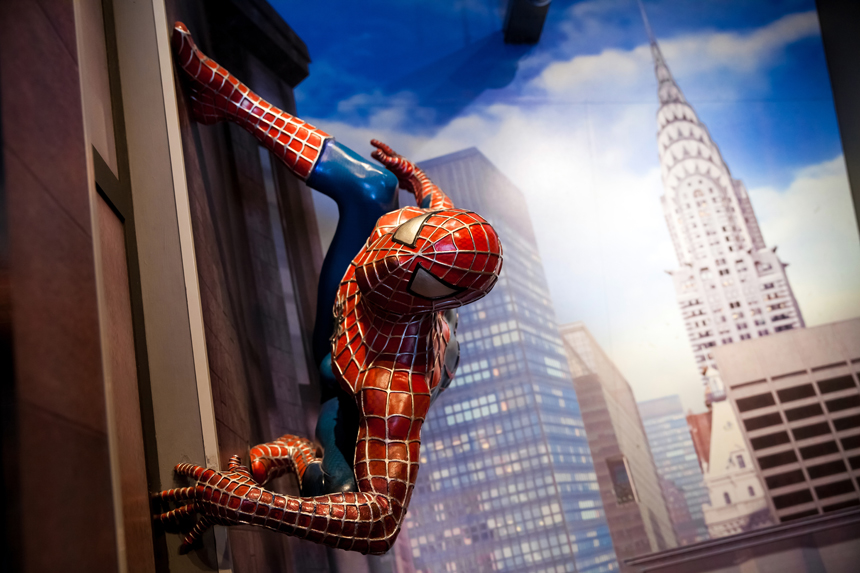
The flagship hero of Marvel, Spider-Man was created by Lee and artist Steve Ditko. Built to appeal to the publisher’s core teen audience, Spider-Man (a.k.a. Peter Parker) had to deal with problems that the readers could relate to, from school to relationships to the weight of responsibility to hiding his identity from Aunt May. Ironically, Goodman wasn’t wild about the idea, telling Lee that the character wouldn’t connect because people don’t like spiders. Nevertheless, Goodman gave Lee and Ditko’s character a chance in the pages of anthology series Amazing Fantasy. With a Jack Kirby cover and a gripping origin story, Spider-Man was an instant hit. The character graduated to his own title, The Amazing Spider-Man, just a few months later. Spider-Man remains the most reliably popular of all of Marvel’s characters, headlining over a dozen comics series over the years. Spidey’s been featured in at least one animated series in each decade since his creation, as well as appearing in live-action TV shows and 12 feature films. Spider-Man is generally regarded as one of the most recognizable fictional characters in the world, with wildly enthusiastic fanbases in countries like India and Japan (which had its own live-action Spidey series in the 1970s).
- The Hulk
First Appearance: The Incredible Hulk #1 (May 1962)
Created by Stan Lee and Jack Kirby
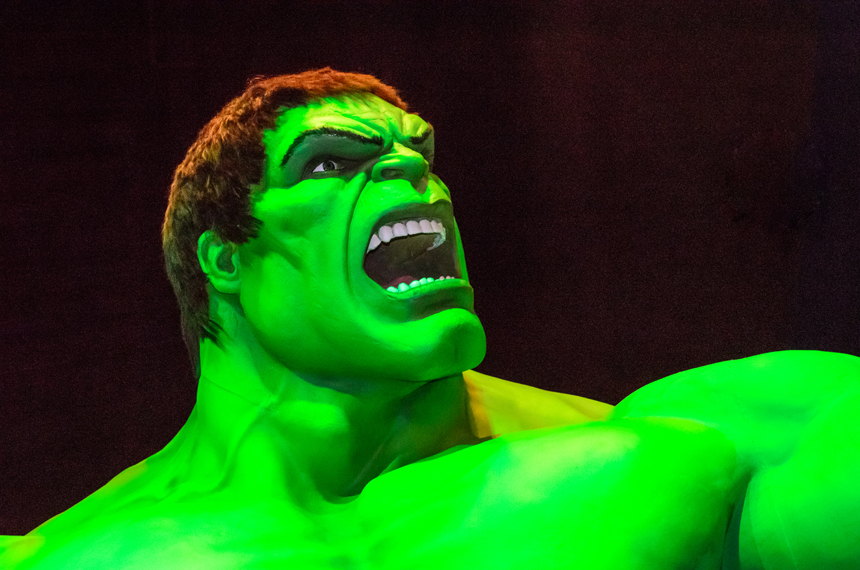
Lee and Kirby drew inspiration from an unlikely source for the Hulk: classic horror. Lee likened the character of the Hulk to both Frankenstein’s creation (a misunderstood monster) and Dr. Jekyll and Mr. Hyde (mild-mannered scientist becomes creature of rage). Despite the character’s longevity, he was not an immediate success. In fact, the first series only made it through six issues before cancellation. However, Lee and Kirby saw the value in the character, and had him guest star in Fantastic Four before making him a founding member of their Avengers team in 1963. The character moved into Tales to Astonish in 1964 before completely taking over the book, which was renamed The Incredible Hulk (volume 2) in 1968. Since then, the Hulk has stuck around, including a period of extreme popularity powered by the live-action CBS TV series that ran from 1977 to 1982. The root of the ongoing appeal has always been in Bruce Banner’s struggle to control his potentially monstrous other side. A frequent feature in animated television, the Hulk has surged in popularity in recent years thanks to the character’s involvement in the Marvel Cinematic Universe; Hulk (or Banner) has been seen in nine films and will be a major part of August’s She-Hulk on Disney+.
- Thor
First appearance: Journey into Mystery #83 (August 1962)
Created by Jack Kirby, Stan Lee, and Larry Lieber
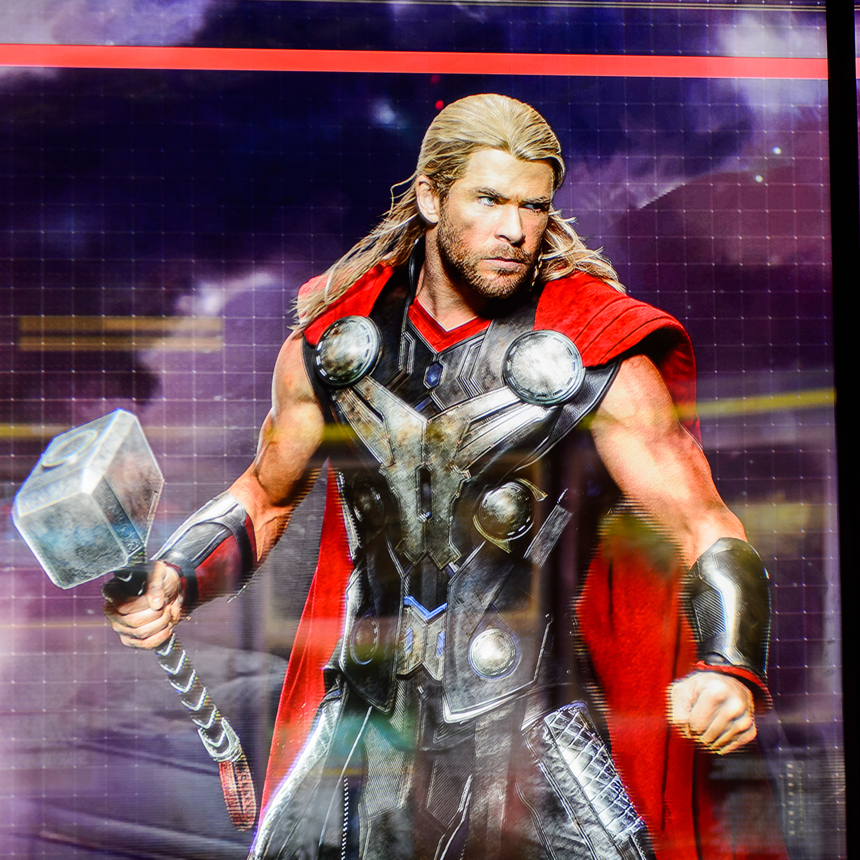
Jack Kirby knew the mythological Thor well; in fact, he’d done a take on Thor for DC in the 1950s. For Marvel’s god of thunder, Kirby decided to lean into superhero sensibilities for the redesign, but firmly grounded the supporting cast (Loki, Odi, Sif, Heimdall, etc.) in the Norse sagas. While Lee contributed, he was too busy to write the introductory issue, so he assigned the script chores to his brother, Larry Lieber. Kirby’s larger-than-life art was perfect for the Marvel vision of Asgard, and Thor, like Hulk, would soon take over his anthology book. Thor also served as a founding member of the Avengers and has been in near continuous publication since the 1960s in one series or another. The character made its live action debut in the 1988 TV-movie The Incredible Hulk Returns, featured alongside the jade giant of the 1970s television series. While never headlining an animated series, the character has been a frequent guest in other shows. In terms of the MCU, Thor broke new ground this summer by headlining a fourth solo film, this summer’s Thor: Love and Thunder; the character has been featured in nine of those films overall. Jane Foster, Thor’s love interest and eventually, Mighty Thor herself, also debuted in 1962 in Thor’s second appearance in Journey into Mystery #84.
- Ant-Man
First appearance: Tales to Astonish #27 (Hank Pym, January 1962); Tales to Astonish #35 (Ant-Man, August 1962)
Created by Stan Lee, Larry Lieber, and Jack Kirby
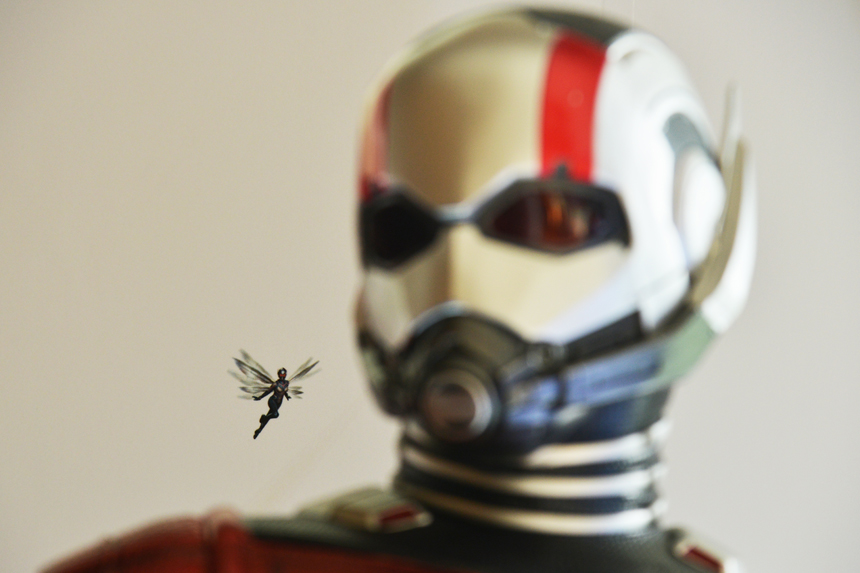
The original Ant-Man, Hank Pym, got his start in a short tale called “The Man in the Ant Hill.” In that story, Pym shrunk himself and had to contend with a variety of dangers. Sales on the issue were good, so Pym was given the heroic identity of Ant-Man. In no time at all, he acquired a partner, Janet Van Dyne, The Wasp, and the pair would become founding Avengers. While Ant-Man and The Wasp appeared in many features and team books, the pair were unusual for not having their own solo titles for years. Pym would soon become one of the supers that had multiple heroic identities, changing to Giant-Man, Goliath, and Yellowjacket over the years. Pym later ceded his Ant-Man identity to reformed criminal Scott Lang, a story that served as part of the basis for the Ant-Man film. Presently, Pym has passed away in comics while Wasp occasionally works with the Avengers and the Agents of Wakanda. The movie versions of the characters return in early 2023 in Ant-Man and the Wasp: Quantumania.
- Doctor Doom
First Appearance: Fantastic Four #5 (July 1962)
Created by Kirby and Lee
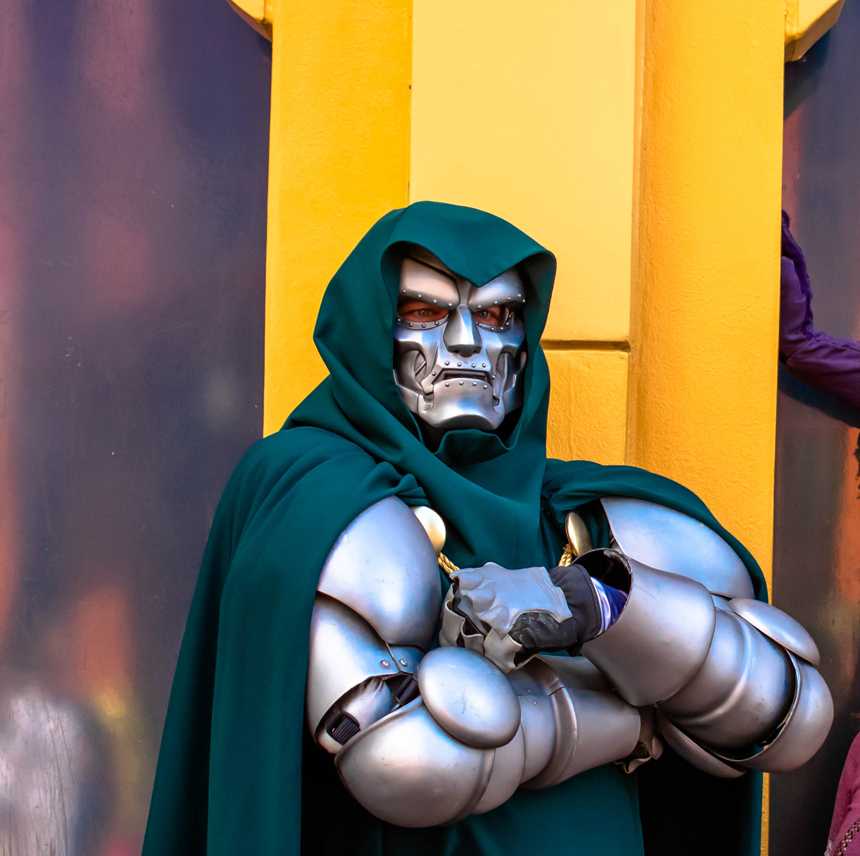
Inspired by Alexander Dumas’s The Man in the Iron Mask and the conception of Death itself, Jack Kirby drew one of the greatest comic book villains of all time. In their search for a name, Lee recounted in 1976’s Bring on the Bad Guys that they settled on one that was “eloquent in its simplicity — magnificent in its implied menace.” Thus was born Victor Von Doom, better known as Doctor Doom. A brilliant scientist and sorcerer, Doom rules the kingdom of Latveria. His greatest rival is his former friend Reed Richards of the Fantastic Four; one of Doom’s driving motivations is simply the desire to be considered the greatest scientific mind over Richards. The obvious precursor to the armored menace of Darth Vader, Doom strides the comic landscape with pithy putdowns and third-person soliloquies that any dictator would envy. While the character has made it to film before (in Roger Corman’s notorious unreleased ’90s adaptation and two Fox films in the early 2000s), he hasn’t made his MCU debut. YET. Rumors point to Doom’s day finally dawning in November’s Black Panther: Wakanda Forever.
- Loki
First appearance: Journey into Mystery #83 (August 1962)
Created by Jack Kirby, Stan Lee, and Larry Lieber
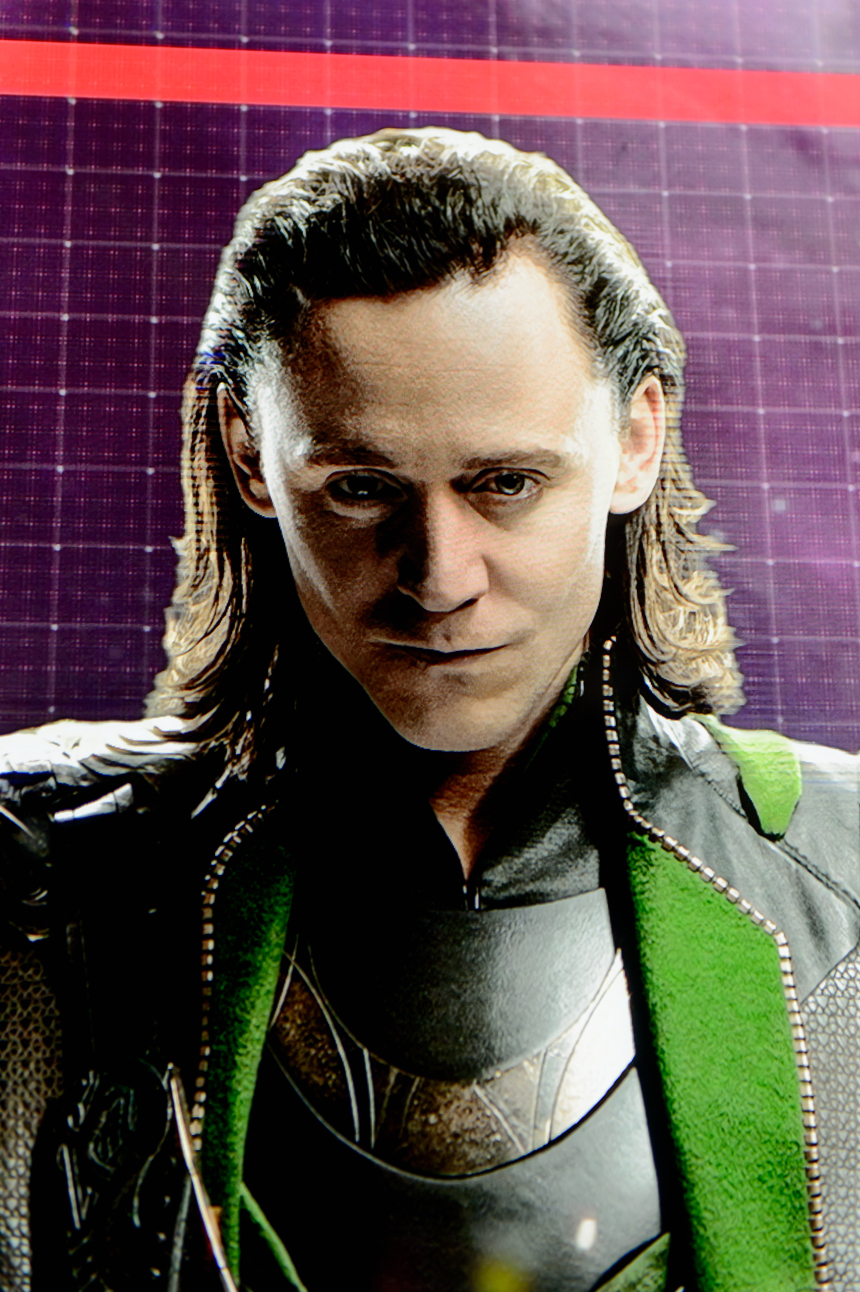
Despite debuting in the same issue as the God of Thunder, Thor’s adoptive brother has earned his own entry due to sheer popularity. Like Thor, Loki was pulled from Norse mythology with his penchant for mischief intact. An attempt by Loki to manipulate Earth’s heroes accidentally resulted in the first assemblage of the Avengers. Though he was defeated, Loki has returned again and again, sometimes as a Machiavellian villain, sometimes as Thor’s reluctant ally. The character has reached unprecedented popularity since Tom Hiddleston began playing him in 2011; Hiddleston’s Loki has appeared in six MCU films in person and several more via archival footage, and headlines the eponymous Loki on Disney+. While Doom might be Marvel’s greatest villain, at this point it’s not too risky to suggest that Loki is their most popular villain.
- Skrulls
First appearance: Fantastic Four #2
Created by Lee and Kirby
A trailer for 2018’s Captain Marvel (Uploaded to YouTube by Marvel Entertainment)
The shape-shifting Skrulls were the FF’s first alien antagonists. Known for their skills at infiltration and their long-standing war with the Kree Empire, the Skrulls have consistently come into conflict with the heroes of Marvel for decades. The Skrulls made their big screen debut in Captain Marvel with a more complex treatment that showed that different factions could be outright altruistic. However, the more sinister side seems set to appear in the forthcoming Secret Invasion television series; the story is based on a popular comics event that saw Skrulls taking the place of certain heroes in a clandestine attempt to overthrow the planet.
- Namor the Sub-Mariner
First appearance: Marvel Comics #1 (1939)
Reintroduction: Fantastic Four #4 (May 1962)
Created by Bill Everett
The trailer for Black Panther: Wakanda Forever (Uploaded to YouTube by Marvel Entertainment)
One of Marvel’s original heroes, Namor debuted in the very first Marvel comic. As an undersea hero with ties to Atlantis, he beat Aquaman to the pages by more than two years. From the beginning, Namor was an antihero with a grudge against the surface world. However, he would soon be fighting Nazis alongside Captain America and the original android Human Torch. The first run of Namor’s adventures died out by 1955. However, with the birth of a new Marvel Universe, Lee and Kirby revived the character as an antagonist for the FF. Namor has stuck around ever since, sometimes fulfilling the role of villain, and sometimes joining the Avengers and the X-Men. Due to a film rights situation that kept the character in movie limbo for years, Namor hasn’t made his film debut. However, that changes in November when Namor and some of his supporting cast (like cousin Namora and enemy Attuma) play a major role in Black Panther: Wakanda Forever.
1962 was the year that the Marvel Universe truly caught fire. The publisher’s success positioned them to take larger and larger creative swings, and the close continuity of the books meant that fans read as much as they could to keep up. By the next year, Lee and Kirby would introduce two team concepts that would reverberate in the culture for years: the Avengers and the X-Men. Today, we take the presence of these characters for granted. But 60 years ago, they were only beginning to be realized on the page by a handful of writers and artists that had no idea that they’d be the subject of films, toys, and theme park rides decades later. Whatever your feelings about the genre, the superhero comics of the 1960s represented a triumph of the imagination that connects with people the world over and continues to fire the imagination of new generations of writers and artists, some of whom will no doubt create their own enduring icons.
Become a Saturday Evening Post member and enjoy unlimited access. Subscribe now
